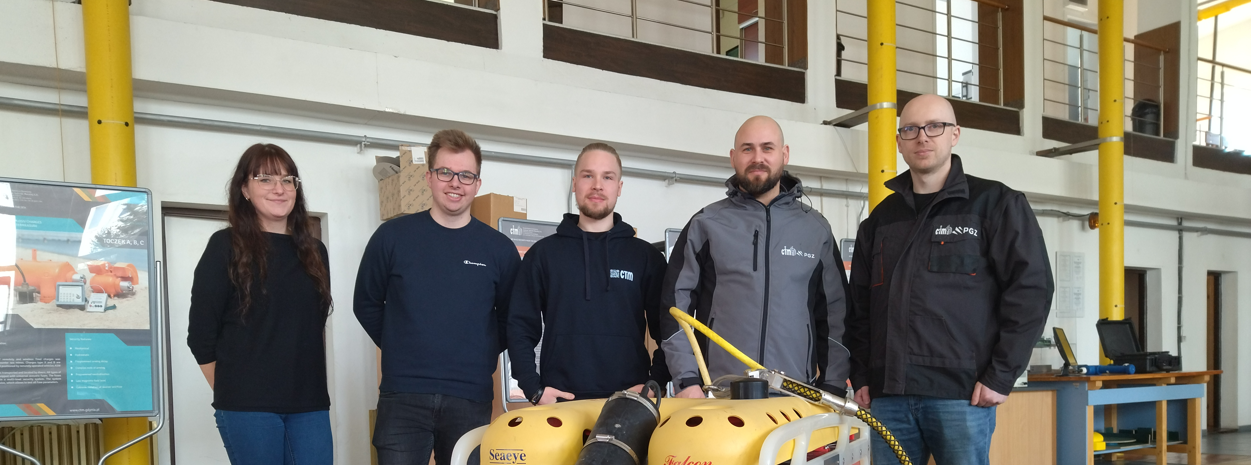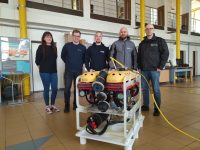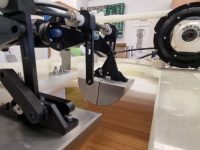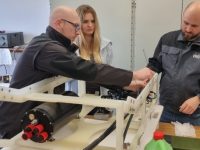Man and The Natural Environment
It is no coincidence that Man is perceived as one of the greatest threats to the Earth, which, combined with the phenomenon of global warming, increasing water deficit, or population growth, may lead to a situation where the natural environment will be irretrievably devastated.
An example of the destructive impact of man on nature is the remains of ammunition and weapons from the period of World War I and II. During both world wars, all parties involved in the conflict mass-produced various types of armament, including chemical weapons, the so-called chemical warfare agents (CWW), significant quantities of which were dumped in the waters of the Baltic Sea. The Bay of Gdańsk, the Bay of Kiel, the sea zone around Bornholm Island are examples of such places. The passage of time and the conditions at the seabed of Baltic Sea have caused the corrosion process of the sunken weapons to continue, and chemical agents are increasingly being released into the natural environment. Research and monitoring carried out in the areas of munitions dumping clearly indicate the growing threat of contamination of the Baltic Sea. The theory that the natural environment will cope with the disposal of the threat on its own does not quite work in this case.
PROBANT/AMMOTRACE
European countries are actively involved in activities aimed at eliminating these types of threats. Examples of ongoing activity are the projects: Probannt and Ammotrace, which were submitted for implementation in 2020 and are implemented under the management of the GEOMAR Helmholtz Center for Ocean Research. The entity responsible for the implementation of both projects is the MARTERA Consortium, consisting of scientific and research organizations operating in sixteen countries, which, with the support of EU funds, has been developing the area of marine technologies in a broad sense since 2017.The main objectives of the consortium are:- Coordination of the implementation of maritime programs at the international level, in order to develop common solutions at the European level;- The possibility of using specific competences of individual entities in international projects;- tightening cooperation in both scientific research and strictly business terms Referring to specific projects:AMMOTRACE is a transdisciplinary project involving science, engineering and enterprises from various disciplines to develop new solutions (both technical and procedural) aimed at real-time detection of conventional and chemical munitions compounds in coastal waters, especially in locations with a high probability of storage munitions which may constitute a serious hazard to shipping.The PROBANNT project aims to analyze the decision-making process for the disposal of offshore explosives. The goal is to implement experience-based solutions that will allow for the creation of a reproducible procedure based on reliable information that will increase the level of security of such tasks.
The Role & Scope of IO PAN / OBR CTM
Instytut Oceanografii Polskiej Akademii Nauk (The Institute of Oceanography of the Polish Academy of Sciences) and Ośrodek Badawczo Rozwojowy Centrum Technik Morskiej (The Research and Development Center of the Maritime Technology Center) have actively joined the group of these institutions, taking actions to save the natural environment and improve the conditions of broadly understood human functioning.IO PAN and OBR CTM, thanks to their knowledge and technical capabilities, actively contribute to the strategy of the European Union, the so-called “blue growth”, related to the exploration of European marine waters. The primary role of the above-mentioned institution will be to develop new methods for real-time detection of ammunition chemical compounds and to build a database based on the collected measurements. On the basis of temporary working arrangements, the schedule and scope of works carried out by OBR CTM were defined.
OBR CTM is implementing a project of a pressure housing (Fig. 1a) for the PIMS/IMS (Photoionisation Mass Spectrometry / Ion Mobility Spectrometry) system, the main element of which is the mass spectrometer. The housing will be installed on the underwater vehicle (ROV), meeting the requirements appropriate for the use of this technology and an independent data interface. Using the accredited laboratories/workshops, as part of vibroacoustics laboratory tests, shock absorbers and anti-vibration insulation will be designed and manufactured, which will then be tested for shock resistance and changes in magnetic field strength. The solutions ensuring electromagnetic compatibility (EMC) will be designed in such a way that the product supplied by OBR CTM minimizes electromagnetic radiation and interference.
As part of the available resources, it is planned to install a device for measuring deviations of the Earth’s magnetic field – a magnetometer – on an underwater vehicle (ROV). Thanks to such a device, the operator will be able to identify areas with higher magnetic field strength caused by metal elements. This is particularly applicable where the movement of bottom waters is greater, and therefore the bottom sediments covered the sunken ammunition after so many years.Another device built for the needs of the PROBANT/AMMOTRACE projects is the so-called sediment sampler. The device integrated with the ROV SAAB Seaeye Falcon (Fig. 1b) will be designed to collect samples from the seabed in the immediate vicinity of facilities that pose a chemical threat to the natural environment. The platform is equipped with three independent buckets driven by electric actuators, which will collect samples from the substrate with a volume of about 250 ml, and a digital optical camera, which will ensure image recording of the place where material is collected from the seabed.The next, extremely important element is a device for measuring the maximum velocities of bottom currents that generate critical shear stresses for various types of sediments – Critical Shear Stress Device (CSSD) (Fig. 1c). The device will take the form of a lowered bottom platform, equipped with an adjustable water jet generator, an underwater camera and a set of sensors to measure water turbidity and transparency.Research carried out by the IO PAN using the CSSD device will allow for the analysis of the movement of bottom sediments depending on the intensity of sea currents.
Action Plan
All devices related to the project will be delivered to the research vessel IO PAN s/y Oceania, which will set off on a cruise in April this year, during which specialists of OBR CTM will have the opportunity to participate in the practical use of measurement systems. The technical solutions and technologies designed by OBR CTM/IO PAN will enable comprehensive search and determination of places as well as identification of materials that pose a threat to the environment.With the help of an underwater vehicle, the installed devices will continuously search for sunken munitions. On the basis of the magnetometer’s work, the area of munitions deposition will be determined. The next stage of measurements will include the use of a mass spectrometer and chemical analysis of sea water in the bottom zone. Additional verification of measurements will be carried out using a seabed sediment sampler mounted on an underwater vehicle.All collected data, after their analysis and processing, will be sent to the main project coordinator, i.e. GEOMAR Helmholtz Center for Ocean Research in Kiel.
“The tasks performed in the project are very interesting, because from the very beginning we are involved in creating a solution that has not really existed until now. The final effect, which will be supported by a number of tests in the natural environment, is to provide a wide spectrum of answers that are not only to optimize the process of detecting and eliminating the threat, but above all to ensure its safe course”, states the project manager of OBR CTM S.A. Tomasz Bajer. As of today, intensive preparations for trials and tests in a real marine environment of the developed solutions are underway. According to the plan, in the coming spring months, as part of sea voyages in the designated areas of the South Baltic Sea, a number of tests will be carried out, the purpose of which will be to check the technical operation of the devices and to obtain a large amount of data necessary to properly verify the research approach.
The final result of all the research under the above-mentioned projects is the construction of a open available database of threats occurring at the seabed of the Baltic Sea. All tested and verified data obtained as part of the use of measurement systems will be visualized on the map so that every person related to the maritime domain has access to it. In addition, the information collected will enable further steps to be taken to extract and dispose of the chemicals.





